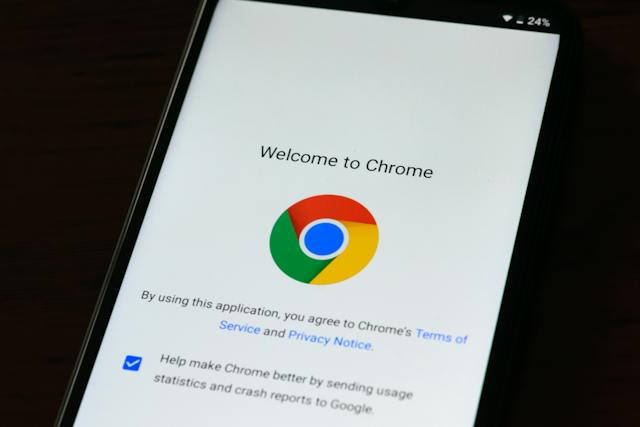Yes, PageRank is still a thing, but its role in SEO has evolved over the years. PageRank was one of the original algorithms used by Google to determine the ranking of web pages in search results, based on the idea that the more high-quality links a page has, the more important it is. Here's a brief overview of how PageRank stands today:
Evolution of PageRank
-
Original Algorithm: Initially, PageRank was a significant factor in Google's ranking algorithm, largely determining a page's importance based on the quantity and quality of inbound links.
-
Complexity of Modern SEO: Over time, Google has significantly refined its algorithms. Today, PageRank is just one of many factors used to determine a page's search ranking. Google now uses a more complex set of algorithms that consider various signals, including content quality, user experience, mobile-friendliness, and many others.
-
Less Transparency: Google no longer publicly shares PageRank scores, which were once visible through the Google Toolbar. This change reflects a shift towards less reliance on a single metric and more emphasis on a holistic approach to evaluating web pages.
-
Still a Core Component: Despite these changes, PageRank remains a core part of Google's ranking algorithms, though it works in conjunction with many other factors. The concept of link equity (the value passed through links) is still relevant, but it's not the sole determinant of a page's authority and ranking.
Current SEO Focus
- Quality Content: The focus has shifted more towards creating high-quality, relevant content that meets the needs of users.
- User Experience: Google increasingly emphasizes the importance of a good user experience, including site speed, mobile-friendliness, and intuitive navigation.
- Diverse SEO Strategy: A modern SEO strategy involves a broad range of considerations, from technical SEO to social signals and beyond.
Conclusion
While PageRank is still part of Google's ranking algorithms, it's important to recognize that SEO is now much more multifaceted. Focusing solely on building links for the sake of PageRank is not advisable. Instead, a comprehensive and user-centric approach to SEO is key in today's digital landscape.

Top of Page
You're correct in pointing out that Google's public communication about PageRank has evolved. While the original PageRank algorithm was a foundational element in Google's early search engine technology, its public visibility and direct influence have indeed changed over the years.
Key Developments in PageRank:
-
Removal of Public PageRank Scores: Google discontinued the public PageRank Toolbar in 2016, which means that the public PageRank scores for websites are no longer available. This move was part of Google's shift towards a more complex and less transparent set of ranking signals.
-
Internal Use and Evolution: Even though the public PageRank score is no longer available, Google has never explicitly stated that PageRank is completely defunct. Internally, Google likely still uses a version of the PageRank algorithm as part of its broader set of ranking factors. However, it has evolved significantly and is now integrated into a much more complex system.
-
Shift in SEO Focus: Google’s move away from publicly sharing PageRank scores was also a signal to SEO practitioners to focus less on chasing high PageRank scores and more on overall website quality, user experience, and content relevance.
-
Modern SEO Complexity: Today, Google uses a wide array of factors in its ranking algorithms. These factors include user experience metrics, content relevance and quality, mobile-friendliness, page speed, and many others. This change reflects a broader trend in SEO towards holistic website optimization rather than focusing on individual metrics.
While the original, publicly visible form of PageRank is no longer a feature of the SEO landscape, the principles behind PageRank — such as the importance of backlinks as a signal of website authority and relevance — remain integral to how search engines understand and rank web pages. SEO today is more about creating valuable content, ensuring a great user experience, and building a technically sound website, rather than optimizing for a single metric like PageRank.

Top of Page
Google still uses a form of PageRank as part of its algorithm to rank web pages, although it has evolved significantly from its original form. However, the specifics of how PageRank is currently implemented and its exact role in the overall ranking algorithm are not publicly disclosed by Google. Here's what we understand about its current status:
Continued Use in Some Form
-
Part of a Complex Algorithm: PageRank is one component within Google's complex and multi-faceted search algorithm. Google's algorithm now incorporates numerous factors, including content relevance, user experience, site speed, mobile-friendliness, and more.
-
No Public Scores: Google no longer provides public PageRank scores, so webmasters and SEO professionals can't gauge the PageRank of their or others' websites as they once could.
-
Evolution and Integration: The original PageRank algorithm, based on the quantity and quality of inbound links, has likely been refined and integrated into a broader set of ranking signals.
Modern SEO Implications
-
Focus on Overall Quality: The modern approach to SEO is less about optimizing for a single metric like PageRank and more about a holistic strategy that includes high-quality content, a good user experience, technical SEO, and building natural backlinks.
-
Backlinks Still Matter: While the details of PageRank's current implementation are unclear, the concept of backlinks as a signal of a page's authority and relevance remains important in SEO.
-
Transparency and Education: Google regularly communicates about best practices in SEO and updates to its algorithm, although it does not provide the level of detail about internal metrics like PageRank as it did in the past.
While PageRank in its original, publicly visible form is no longer a part of the SEO landscape, the underlying principle that links are a signal of a page's authority continues to be a factor in how Google ranks pages. However, it's just one of many factors in a much more sophisticated and less transparent algorithm. The focus for SEO should be on a comprehensive and quality-driven approach rather than any single metric.

Top of Page
Google's PageRank algorithm, as part of their larger search algorithm, works in the background and is not directly assigned by individual components of Google Search. It's a part of the overall system that Google uses to evaluate and rank web pages. Here's how it generally functions in the context of Google's search system:
1. Link Analysis:
- Primary Function: The core concept of PageRank is to determine the importance of a webpage based on the quantity and quality of inbound links from other webpages.
- Quality over Quantity: A link from a highly authoritative site is worth more than many links from lesser-known sites.
- Network Effect: The algorithm considers the entire link structure of the web to understand the relative importance of a page.
2. Integration with Other Ranking Factors:
- Holistic Approach: While PageRank is about links, it's just one part of Google's overall ranking algorithm, which includes numerous other factors like content relevance, user experience, site speed, and mobile-friendliness.
- Algorithm Updates: Over the years, Google has updated its algorithm to include new factors and refine existing ones, reducing the singular influence of PageRank.
3. Algorithmic Processing:
- Computation: The actual computation of PageRank happens algorithmically within Google's system, likely involving complex data structures and distributed computing resources.
- Updates and Refreshes: Google continuously crawls the web, updating its index and the PageRank of pages as it discovers new links and content.
4. Search Query Processing:
- Relevance Matching: When a search query is entered, Google's algorithm works to find the most relevant pages, with PageRank being one of the factors to determine which pages appear in the search results.
5. No Direct User or Webmaster Input:
- Automatic and Opaque: There is no direct way for users or webmasters to influence the PageRank of a particular page. The process is automatic and part of Google's proprietary systems.
PageRank is a foundational element in the background of Google's search algorithm, working in concert with many other factors to determine the ranking of pages in search results. It's an automated process based on Google's analysis of the web's link structure, and it's not something that users or webmasters can directly manipulate or assign. The emphasis for webmasters should be on building high-quality, informative, and user-friendly websites, which naturally garner high-quality inbound links, a key aspect influencing PageRank.

What's the Difference Between PageRank and Page Authority?
Top of Page
PageRank and Page Authority are both metrics used to estimate the importance or influence of a webpage, but they come from different sources and are calculated differently:
PageRank
- Origin: PageRank is a metric developed by Google's founders, Larry Page and Sergey Brin. It was one of the first algorithms used by Google to rank web pages in search results.
- Calculation: It is based on the quantity and quality of inbound links to a page. The fundamental idea is that a link from one page to another is a vote of confidence.
- Public Visibility: Google used to make PageRank scores publicly available via the Google Toolbar, but this practice was discontinued in 2016.
- Current Use: While the public score is no longer available, Google still uses an evolved form of the PageRank algorithm as part of its overall search ranking process, albeit in a more complex and integrated manner.
Page Authority (PA)
- Origin: Page Authority is a metric developed by Moz, an SEO software company. It is not a Google metric and is not used by Google in its ranking algorithm.
- Calculation: PA predicts how well a specific page will rank on search engine result pages (SERP). It is calculated using Moz's own algorithm, which considers many factors, primarily including link metrics such as the number of links, the quality of the links, and the strength of the sites providing those links.
- Public Visibility: PA is publicly available and can be checked using Moz's tools like MozBar or Link Explorer.
- Purpose: It's used as a comparative tool in SEO analysis to gauge the potential strength or influence of a page in comparison to other pages.
Key Differences
- Source and Usage: PageRank is a Google metric and a part of their ranking algorithm, while Page Authority is a Moz metric used for SEO analysis and comparison.
- Calculation Method: PageRank primarily focuses on link quantity and quality, while Page Authority uses a broader set of data points from Moz’s own data and algorithms.
- Impact on SERP: PageRank directly influences Google's search rankings, whereas Page Authority does not influence Google's rankings but is used by SEO professionals as an indicator of a page's potential to rank.
While both PageRank and Page Authority are aimed at gauging the importance of web pages based on links, they are distinct in their origin, calculation, and use. PageRank is part of Google's internal ranking algorithm, while Page Authority is a third-party metric used for SEO analysis.